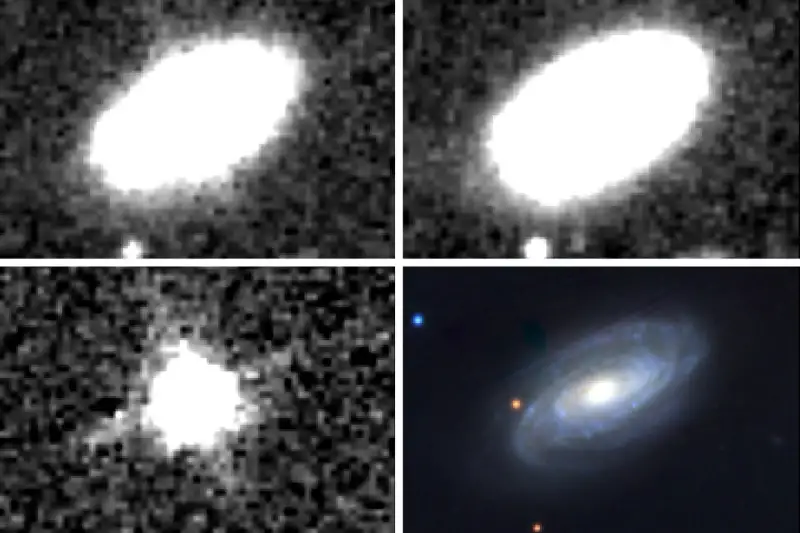The star was destroyed by the supermassive black hole at the centre of a spiral galaxy named "NGC 7392."
A long time ago, a huge "black hole" (supermassive black hole), which was very far away in the universe, captured a big star, broke it into pieces, and scattered it. The black hole at the center of the barred spiral galaxy named "NGC 7392" destroyed the star, and the light emitted from it reached the Earth in 2014. But a few days ago, astronomers were able to reveal how the destruction of this star happened by studying the data related to the light that reached it.
They discovered these facts through the studies conducted after observing the sizeable light emission in the central region of the galaxy "NGC 7392" when the black hole swallowed the star, and this information was first published on April 28. The disclosure was made. Thus, when a star is pulled towards itself by the massive gravity of a black hole, a phenomenon in which the star is destroyed is called a "tidal disruption event (TDE)," and this is considered to be the closest place to Earth where such a phenomenon has been observed so far.
137 million light-years away from Earth, the spiral galaxy NGC 7392 is home to this supermassive black hole in the constellation Aquarius. In the center of the spiral galaxy NGC 7392, which is about 35 million times the distance to the red dwarf star Proxima Centauri, the closest star to the Earth apart from the Sun, is located at a distance of 4.246 light-years from the Earth. This phenomenon has been observed from a distance more than four times closer to the location of the "tidal disruption event (TDE)" phenomenon that happened closest to the Earth that was discovered before.
Facts about this phenomenon have been uncovered by using the data obtained in infrared wavelengths by NASA's NEOWISE space telescope and data collected by other space telescopes and ground telescopes. Astronomers have observed nearly 100 such "tidal disruption events" in the universe. "Tidal disruption event (TDE)" phenomena can be observed in general, even in galaxies belonging to the "green galaxy" category, where the formation of new stars is numerically low. The observation of such a phenomenon of "tidal disruption event (TDE)" in a galaxy belonging to the category of "blue galaxy" where new stars are born in large numbers like "NGC 7392" can be described as a unique fact.




Great work. Keep it up.
ReplyDeleteexcellent
ReplyDeleteNicely written, keep it up
ReplyDeleteGood Article.. Keep it up
ReplyDelete